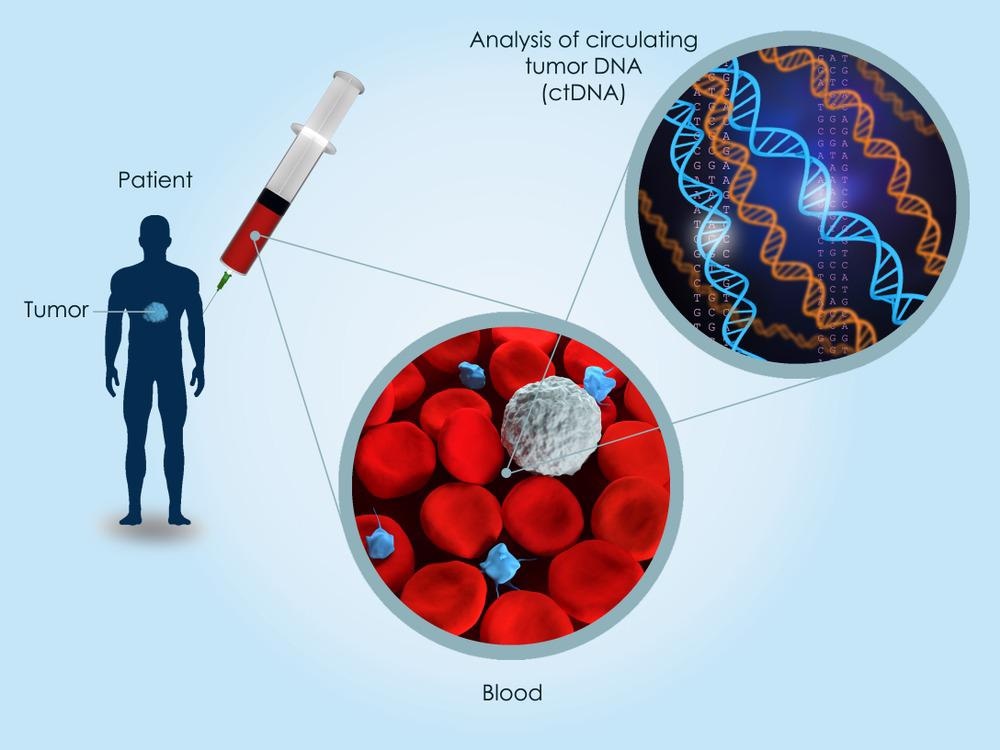Biochemistry plays an important role in the treatment of disease. Biochemistry incorporates elements of pharmacology, pathology, cell biology, and physiology to explain both the basis and proposed therapeutic options for the treatment of disease. Several examples can be drawn upon to show how biochemistry is used to inform the development and monitoring of disease therapies.

Image Credit: ART STOCK CREATIVE/Shutterstock.com
Biochemistry in the Treatment of Immunological Based Disorders
Biochemistry has been used to unearth the critical role of key cytokinins in the inflammatory pathway, and subsequently, this knowledge has been used to develop treatments to target these diseases. Biochemistry has been important in determining the role of key cytokines produced by the inflammatory mediator cells of the immune system, such as T cells.
A critical interleukin involved in the pathology of several neurological, dermatological, and rheumatic diseases is interleukin 17 (IL-17). IL-17 is a pro-inflammatory cytokine that is produced by T helper 17 (Th17) cells and has been widely indicated in the pathogenesis of chronic inflammatory and autoimmune diseases.
The targeting of pro-inflammatory cytokines such as IL-17 as well as tumor necrosis factor-α (TNF-α) is essential in protecting the host against microbes. Through elucidating their pathways, targeting inflammatory cytokines has been an effective therapeutic approach in patients with a variety of autoimmune diseases. These include Crohn's disease, ulcerative colitis, ankylosing spondylitis, psoriasis, and psoriatic arthritis.
In particular, new targets along the IL-17-Th17 pathway which include the cytokine IL-17A have begun to improve the therapeutic options available with increased efficacy and safety offered by drugs such as a ustekinumab. This humanized antibody is an inhibitor of both IL-12 and IL-23, upstream of IL-17, and can target multiple TH cell pathways alongside the TH17 cell pathway.
This has proven safe and efficacious in those with psoriasis and psoriatic arthritis. Several other biologics include secukinumab, ixekizumab, brodalumab, tildrakizumab, risankizumab, etanercept, adalimumab, and more also target various mediators of the inflammatory pathways, with indications across several autoimmune diseases.
Biochemistry in the Treatment of Cancer
Biochemistry has paid an important role in uncovering important proteins that are implicated in the development of cancer and have paved the way for new therapies against it.
The biochemical basis underlying the origin and spread of cancer has helped develop novel strategies for targeted therapy and tailored cancer management. An example of this is the use of transcription activator-like effector nucleases (TALENs), CRISPR/CAS9 system, and zinc finger proteins (ZNFs) in cancer treatment. All of these technologies can be used to repair damaged genomes, particularly breaks in the DNA. This allows researchers to perform targeted manipulation in any gene in the genome either in vitro or in vivo.
Most recently, researchers at the University of Central Florida and New York university discovered a protein modification while studying neurofibromatosis type 2, which is characterized by the development of tumors of the nervous system (schwannomas). The hallmark of tumor cell behavior is uncontrolled growth, with an energy demand necessary to produce building blocks for replication.
When schwannoma cells were observed, researchers found that they produce a nitrating agent called peroxynitrite (an oxidant) which can modify tyrosine in proteins. When tyrosine is nitrated, reprogramming of tumor cell metabolism occurs, which promotes tumor cell proliferation.
This illustrates that, when proteins undergo specific modifications, they can acquire new functions that are implicated in the control of tumors. As such this opens up the possibility of targeting peroxynitrite production exclusively in tumor cells and prevents a new therapeutic strategy for the treatment of tumors of the nervous system in general.

Image Credit: Meletios Verras/Shutterstock.com
Biochemistry: Biomarker Discovery for Disease Treatment
Biomarkers have been discovered using biochemistry. These are instrumental in human diseases alongside patient phenotypes, or clinical applications. Conditions include cancer, cardiovascular, immunological, neurological diseases, and more.
A recent area of biomarker development in disease detection is circulating tumor DNA (ctDNA). Both mutations and copy number alterations can be measured in ctDNA and are increasingly being used to predict the response to targeted therapies and assess treatment responses.
Measurement of methylated ctDNA is emerging as a sensitive assay alongside mutation and copy number alterations analysis in ctDNA. This can be used to determine the site of origin. In addition, longitudinal monitoring can be used to track therapy resistance and identify mechanisms of resistance.
Circulating tumor cells (CTCs) are clinically relevant in a range of tumor types and, liquid biopsies at large are rapidly evolving in sensitivity and specificity which would facilitate the movement towards ctDNA-based liquid biopsies in precision oncology. Currently, CTCs are used as prognostic biomarkers in breast cancer, prostate cancer, and CRC It is hoped that liquid biopsies could support immunotherapy decision making in the future.
Biochemistry has a varied role in disease treatment – from elucidating the mechanisms and molecules that are implicated in the disease state and developing targeted strategies against them for therapeutic management, to unveiling biomarkers that serve as a useful indicator of cancer, response to therapy, and inform clinical therapeutic decision making.
References:
- Kilgour E, Rothwell DG, Brady G, et al. (2020) Liquid Biopsy-Based Biomarkers of Treatment Response and Resistance. Cancer Cell. doi:10.1016/j.ccell.2020.03.012.
- Pestoni JC, Klingeman Plati S, Valdivia Camacho OD, et al. (2019) Peroxynitrite supports a metabolic reprogramming in merlin-deficient Schwann cells and promotes cell survival. J Biol Chem. doi: 10.1074/jbc.RA118.007152.
- Bartlett HS & Milton RP. (2014) Targeting the IL-17–TH17 pathway. Nature. doi:10.1038/nrd4518.
- Barr AJ. (2018) The biochemical basis of disease. (2018) Essays Biochem. doi:10.1042/EBC20170054.
Further Reading
 Verifying the healthcare, nutritional and environmental applications of new Antarctic bacteria
Verifying the healthcare, nutritional and environmental applications of new Antarctic bacteria